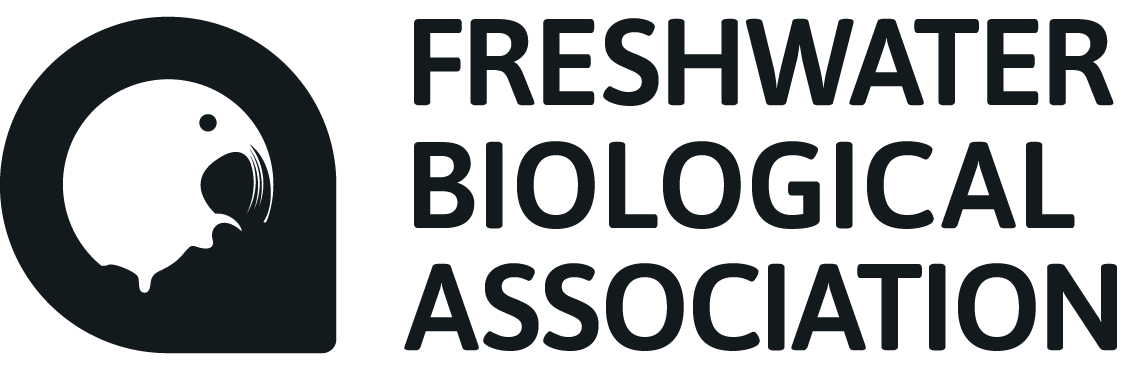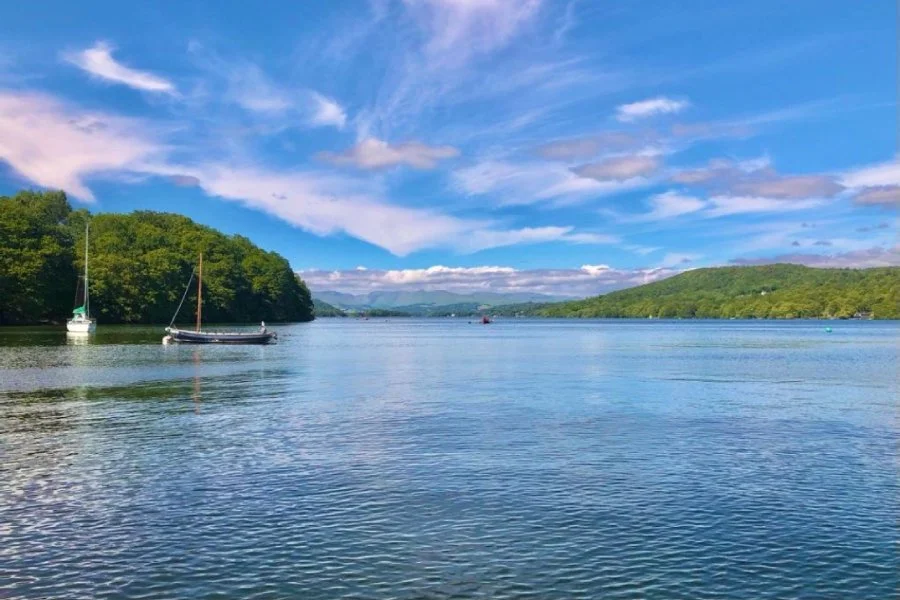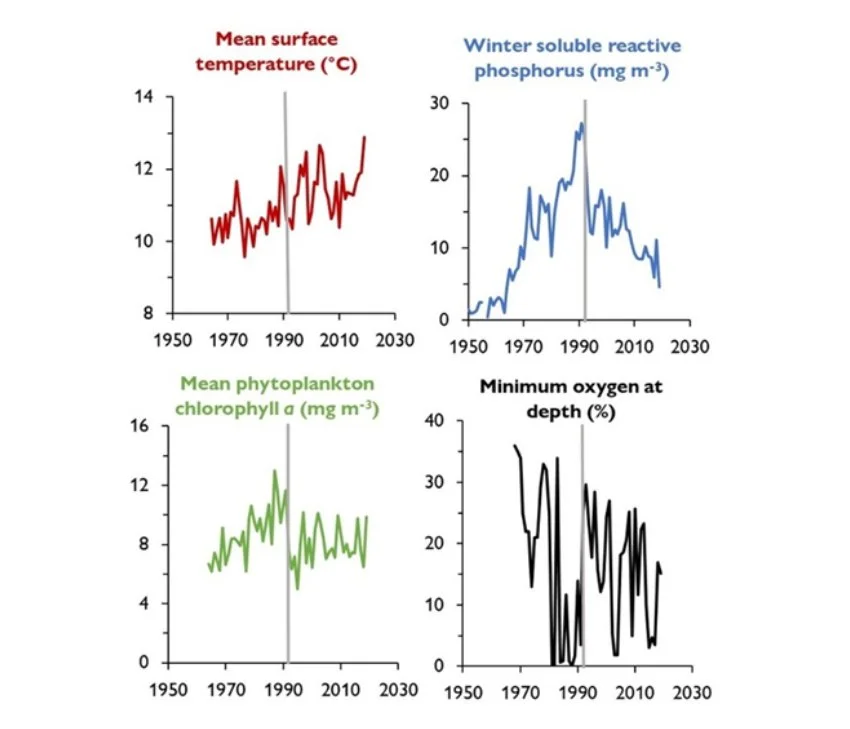Windermere Info Note
The State of Windermere
Windermere (from FBA, YMCA Lakeside) by Amy Jones (2022).
First published online in February 2022.
Lakes are sensitive to multiple human pressures that operate at different spatial and temporal scales and trigger a variety of interlinked, often negative, consequences for freshwater ecology and the benefits that lake ecosystems provide.
Like all lakes, the state of Windermere has altered over time. Over several centuries, human activities caused nutrient-enrichment. More recently, climate change and altered food webs have made Windermere more sensitive to nutrient enrichment, requiring further action to improve its health.
Authors: Stephen Maberly (UKCEH) and Suzanne McGowan (Netherlands Institute of Ecology).
Overview
Detailed and long-term research has revealed how Windermere has changed in response to multiple human pressures.
Nutrient enrichment (eutrophication) has been the main problem over the last two centuries, causing an increase in algal blooms in open water and around the lake shore, and deoxygenation at depth.
Considerable investment by water companies to reduce nutrient inputs has prevented further deterioration but as the lake responds to more recent pressures, including climate change and the expansion of non-native species, the overall improvement has been modest.
Further action to improve the ecological health of Windermere will require nutrient inputs from agriculture, septic tanks and wastewater treatment works to be identified and reduced.
Overflow discharge of untreated sewage at times of heavy rainfall, and animal faecal waste from agricultural land, contain microbes that are a potential, but poorly evaluated, threats to human health.
Background
Windermere is located in the Lake District National Park in Cumbria, UK, within a UNESCO World Heritage site. Tourism is the largest source of income to the region’s economy and in 2018 over 28 million tourist days were spent in the Park (1). The lake is a focus for many types of recreation and water sports, and has been the site of the ‘Great North Swim’ since 2008. It also supplies drinking water to north west England during droughts and is subject to environmental legislation including the Bathing Water Directive, the Urban Wastewater Treatment Directive and the Water Framework Directive.
Windermere is England’s largest lake although it is small on a global scale [Box 1].
Box 1: Windermere statistics
Catchment area, 250 km2
Two interlinked basins, North and South
Lake area, 14.4 km2
Lake elevation, 39 m
Maximum depth, 64 m (North basin)
Mean water depth, 21 m
It is, however, one of the best studied lakes in the world with systematic records that began in the 1930s, taken by the Freshwater Biological Association and, since 1989, by the UK Centre for Ecology & Hydrology and forerunner organisations [Box 2] (2).
The wealth of regular long-term records of intra-annual and decadal change, decadal and centennial change, obtained from analysing lake sediment cores (3), high-frequency automatic measurements (4) and models of lake response to environmental conditions (5), provide an unparalleled understanding of how the lake has responded to natural change, human pressures and remedial actions. This information is crucial for recommending future management strategies to improve the overall health of the lake. The catchment of Windermere is bounded at the north by mountains of around 900 m that receive high precipitation.
Box 2: TImeline of events in and around Windermere. ‘BP’ is ‘Before Present’.
Today, upland moorland gives way to grassland, woodland and villages at lower elevation [Box 3]. The large catchment area relative to the lake in combination with high rainfall mean that Windermere is affected to a high degree by pollutants delivered from the surrounding lands.
Box 3: Windermere and its catchment, modified from (6). Wastewater Treatment works (WwTWs) are shown in red.
After the formation of Windermere at the end of the last glaciation [Box 2] the first human impacts were local. Tree felling in the surrounding catchment accelerated around 900-1200 AD as sheep farming and charcoal production for metal smelters expanded. Most forests were destroyed by 1500. Tourism started to become popular after 1750, stimulated by the Picturesque and Romantic movements, and the first guidebook to the Lakes was published by Thomas West in 1778. The train line extension to Windermere in 1847 increased local and tourist numbers, so that more drinking water and better ways of sewage disposal from the villages of Bowness and Windermere into the lake (2) were needed [Box 2].
Microscopic algae (phytoplankton) [Box 4], a key indicator of lake water quality, had changed markedly in the South Basin by 1860 and in the North Basin by 1890 (2). Sewage treatment was rudimentary until 1967 when secondary treatment for removing organic matter and pathogens (but not nutrients) was installed. A Sunday Times article by John G. Stockner in 1968 warning of the 'timebomb' of eutrophication [Box 4] in Windermere was met with scepticism.
Box 4: Glossary
Chlorophyll - the green pigments responsible for harvesting light energy in photosynthesis; the concentration of which is used as a measure of phytoplankton abundance.
Combined Sewage Overflows (CSO) - discharges during heavy rain of water that is a mixture of sewage and rainwater from road drains.
Eutrophication - an increase in lake productivity, commonly caused by human nutrient enrichment.
Phytoplankton - the microscopic algae that form the base of the food-web in the open water.
Stratification - the partial separation of a lake into an upper, less dense layer of water lying on top of a lower more dense layer, usually produced as a result of surface warming.
Zooplankton - small planktonic animals that feed on phytoplankton.
By the early 1990s, environmental monitoring showed unequivocally that Windermere, especially the South Basin, was becoming increasingly and seriously nutrient enriched [Box 5]. There were larger phytoplankton [Box 4] populations, especially cyanobacteria (blue-green algae), dense growths of green filamentous algae grew on rocks around the lake shore and the concentration of oxygen at the bottom of the lake during summer stratification [Box 4] became depleted.
Following recommendations by the Institute of Freshwater Ecology (a forerunner of the current UKCEH), the local water company installed a more effective (tertiary treatment) process in 1992 that reduced the concentration of phosphorus discharged from the two WwTWs on the lake shore at Ambleside and Tower Wood [Box 3].
Responses to nutrient reduction
The reduction in phosphorus input caused a rapid improvement in the lake water quality [Box 5]. Phosphate concentration (the main nutrient controlling excessive algal growth) declined, as did the amount of phytoplankton in the summer and the amount of unsightly green algae on rocks around the lake shore, while the minimum oxygen concentration at depth increased (6)(7).
Box 5: Changes in the South Basin of Windermere. The vertical grey line marks the start of tertiary sewage treatment.
Regional and global human pressures
In addition to local changes in the catchment, Windermere is affected by regional processes that affect the local weather but are not directly linked to climate change. However, since around the mid to late 1980s, there is irrefutable evidence that the temperature of the atmosphere (8) and lakes worldwide (9)(10) are increasing as levels of atmospheric greenhouse gases, especially CO2, increase.
Long-term records show that over the last 70 years the average annual surface water temperature of Windermere has increased by around 1.7 °C [Box 5]. This has caused the period of seasonal water temperature stratification [Box 4] within the lake to start earlier and end slightly later. The longer stratification period improves the underwater light climate for phytoplankton by reducing the depth of water through which they are mixed. It also increases the length of time water at depth is separated from the atmosphere, increasing the risk of oxygen depletion by the action of microbes that decompose organic matter.
There have also been changes to the food web. Arctic charr, a salmonid fish that requires cool water, has declined dramatically in abundance since the late 1980s, probably mainly as a result of warming winter temperature (11)(12). Roach, that was probably brought to the lake as fishing bait a century ago, has recently increased, most likely associated with an increase in water temperature (13). Zooplankton [Box 2] populations that feed on the phytoplankton have declined, especially in the summer, possibly because they are being consumed by roach. Although the improved treatment of sewage effluent in 1992, and subsequently, reduced nutrient input and prevented further deterioration in water quality, there has not been a sustained improvement. The precise cause of this is being investigated but climate change and alteration to the food-web are likely to be involved.
Human health
Blooms of certain cyanobacteria, promoted by nutrient enrichment and warmer water, can produce toxins that are harmful to the health of people, pets and livestock. The 2009 Great North Swim was cancelled because of risks from a cyanobacterial bloom. In addition, because water from road drains as well as sewage are combined, WwTWs struggle to cope during periods of prolonged and intense rainfall, that are more frequent as a result of climate change (8). This allows diluted sewage to enter the lake from Combined Sewage Overflows (CSOs) [Box 4] with potential consequences for human health by the introduction of faecal pathogens. Input of pathogens from livestock in the catchment is also an unknown health risk.
The bigger picture
The responses of Windermere to human impacts in the local catchment and on the global climate are widespread in other inland waters. Around 60% of European lakes and rivers fail to meet the nutrient targets needed to achieve ‘good ecological status (14). Lakes are warming globally, thermal lake types are shifting to lower latitudes and ice cover is decreasing (9)(10)(15).
Additionally, the biodiversity of lakes, and to a lesser extent rivers, are very vulnerable to the introduction of invasive non-native species (16). Overall, inland waters are the most altered of any ecosystem type globally (17). There is agreement that greater improvements in ecological quality of inland waters will require a more integrated approach across different sectors including agriculture, urban planning, hydropower and flood control (18). A recent report by the UK Parliament’s Environment Audit Committee highlighting the poor state of rivers in England (19) is likely to apply equally to lakes.
Next steps to manage recent and future multiple pressures
A report in 2009 that analysed data for the period 1997 to 2007, estimated that about 30% of all forms of phosphorus entering Windermere originated from WwTWs, with the remainder entering via inflowing streams (20). The WwTWs and inflowing streams contributed roughly equal amounts of the more biologically active form of phosphorus. Input of phosphorus from CSOs is currently unknown. Therefore, sources other than the two major WwTWs are very important in affecting the ecological health of Windermere. These sources include upstream WwTWs serving villages such as Hawskhead, Elterwater and Grasmere [Box 3] and septic tanks from individual properties or larger establishments such as hotels. In addition, soil erosion and leaching of fertiliser from improved grassland in the catchment will also contribute to phosphorus input. Tourists are unwitting contributors to the ecological deterioration of the sites they visit and enjoy. Visitor numbers are highest between spring and autumn, which is also the time of year when nutrients are likely to have the largest stimulating effect on the lake phytoplankton.
A computer modelling study has projected that future warming will increase the density of phytoplankton, and especially cyanobacteria, in Windermere even under current levels of nutrient load (5). However, these increases could be curtailed if nutrient concentrations are reduced further. Since lake warming cannot be managed locally, this finding highlights the necessity of reducing nutrient input to the lake. While the input of nutrients from WwTWs have reduced substantially over time, other sources within the catchment need to be identified and measures taken to reduce them. Whether or not there is a human health risk from pathogens from the WwTW and especially the CSOs also needs to be evaluated so that understandable public concern (21) can either be allayed or measures taken to minimise the risk. Finally, a better scientific understanding is needed of how Windermere will respond to future multiple pressures in order to guide future remediation actions.
References
Lake District National Park. (2022). Lake District facts and figures. https://www.lakedistrict.gov.uk/learning/factsandfigures.
Maberly, S. C. & Elliott, J. A. (2012). Insights from long-term studies in the Windermere catchment: external stressors, internal interactions and the structure and function of lake ecosystems. Freshw. Biol. 57, 233–243. doi: 10.1111/j.1365-2427.2011.02718.x
McGowan, S. et al. (2012). Humans and climate as drivers of algal community change in Windermere since 1850. Freshw. Biol. 57, 260–277. doi: 10.1111/j.1365-2427.2011.02689.x
Woolway, R. I. et al. (2018). Physical and chemical impacts of a major storm on a temperate lake: a taste of things to come? Clim. Change 151, 333–347. doi: 10.1007/s10584-018-2302-3
Elliott, J. A. (2012). Predicting the impact of changing nutrient load and temperature on the phytoplankton of England’s largest lake, Windermere: Phytoplankton response to changing nutrients and temperature. Freshw. Biol. 57, 400–413. doi: 10.1111/j.1365-2427.2011.02717.x
Parker, J. E. & Maberly, S. C. (2000). Biological response to lake remediation by phosphate stripping: control of Cladophora. Freshw. Biol. 44, 303–309. doi: 10.1046/j.1365-2427.2000.00554.x
Planas, D., Maberly, S. C. & Parker, J. E. (1996). Phosphorus and nitrogen relationships of Cladophora glomerata in two lake basins of different trophic status. Freshw. Biol. 35, 609–622. doi: 10.1111/j.1365-2427.1996.tb01772.x
Masson-Delmotte, V. P. et al. (2021). IPCC, 2021: Climate Change 2021: The Physical Science Basis. Contribution of Working Group I to the Sixth Assessment Report of the Intergovernmental Panel on Climate Change. (Cambridge University Press, in press).
O’Reilly, C. M. et al. (2015). Rapid and highly variable warming of lake surface waters around the globe. Geophys. Res. Lett. 42, 10773–10781. doi: 10.1002/2015GL066235
Maberly, S. C. et al. (2020). Global lake thermal regions shift under climate change. Nat. Commun. 11, 1232. doi: 10.1038/s41467-020-15108-z
Winfield, I. J., Fletcher, J. M. & James, J. B. (2008). The Arctic charr (Salvelinus alpinus) populations of Windermere, UK: population trends associated with eutrophication, climate change and increased abundance of roach (Rutilus rutilus). Environ. Biol. Fishes 83, 25–35. doi: 10.1007/s10641-007-9235-4
Kelly, S. et al. (2020). Warming winters threaten peripheral Arctic charr populations of Europe. Clim. Change 163, 599–618. doi: 10.1007/s10584-020-02887-z
Elliott, J. A., Henrys, P., Tanguy, M., Cooper, J. & Maberly, S. C. (2015). Predicting the habitat expansion of the invasive roach Rutilus rutilus (Actinopterygii, Cyprinidae), in Great Britain. Hydrobiologia 751, 127–134. doi: 10.1007/s10750-015-2181-9
Nikolaidis, N. P. et al. (2021). River and lake nutrient targets that support ecological status: European scale gap analysis and strategies for the implementation of the Water Framework Directive. Sci. Total Environ. 151898. doi: 10.1016/j.scitotenv.2021.151898
Sharma, S. et al. (2019). Widespread loss of lake ice around the Northern Hemisphere in a warming world. Nat. Clim. Change 9, 227–231. doi: 10.1038/s41558-018-0393-5
Sala, O. E. (2000). Global Biodiversity Scenarios for the Year 2100. Science 287, 1770–1774. doi: 10.1126/science.287.5459.1770
Carpenter, S. R., Stanley, E. H. & Vander Zanden, M. J. (2011). State of the World’s Freshwater Ecosystems: Physical, Chemical, and Biological Changes. Annu. Rev. Environ. Resour. 36, 75–99. doi: 10.1146/annurev-environ-021810-094524
Carvalho, L. et al. (2019). Protecting and restoring Europe’s waters: An analysis of the future development needs of the Water Framework Directive. Sci. Total Environ. 658, 1228–1238. doi: 10.1016/j.scitotenv.2018.12.255
Environmental Audit Committee. (2022). Water quality in rivers. https://publications.parliament.uk/pa/cm5802/cmselect/cmenvaud/74/summary.html.
Maberly S. C. (2009). Options for the remediation of Windermere: Identification of current nutrient loads and future loads to meet ecological targets. 32. https://nora.nerc.ac.uk/id/eprint/8384
Sewage pollution in National Parks and Areas of Outstanding Natural Beauty - Early Day Motions - UK Parliament. https://edm.parliament.uk/early-day-motion/59000/sewage-pollution-in-national-parks-and-areas-of-outstanding-natural-beauty.
The current Cumbrian Lakes data collection by UKCEH is supported by Natural Environment Research Council award number NE/R016429/1 as part of the UK-SCaPE programme delivering National Capability.
Authors
Prof Stephen Maberly (UK Centre for Ecology and Hydrology - scm@ceh.ac.uk).
Prof Suzanne McGowan (Netherlands Institute of Ecology - S.McGowan@nioo.knaw.nl).




